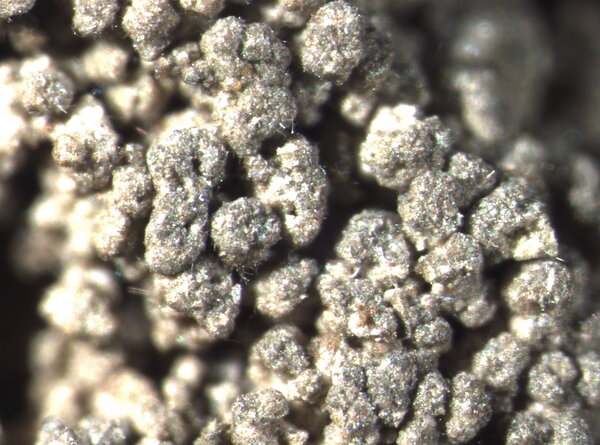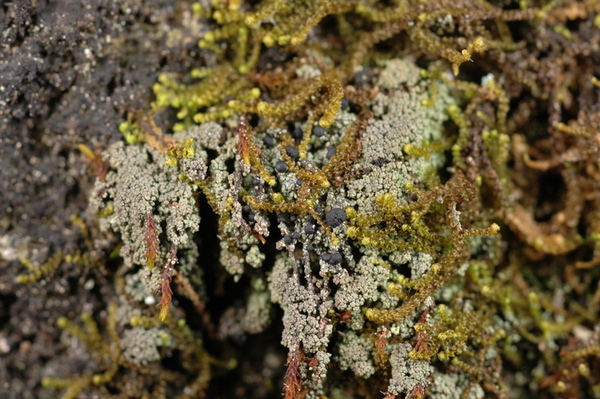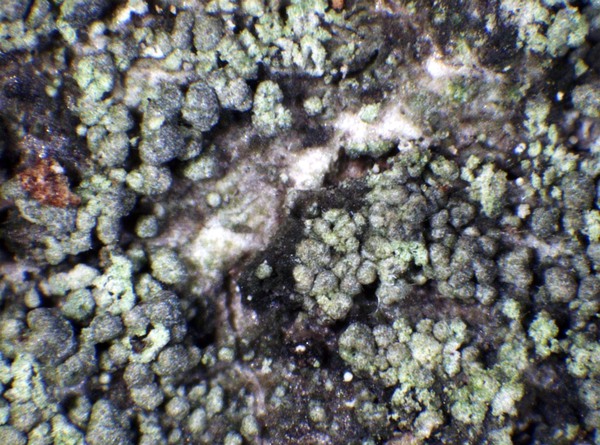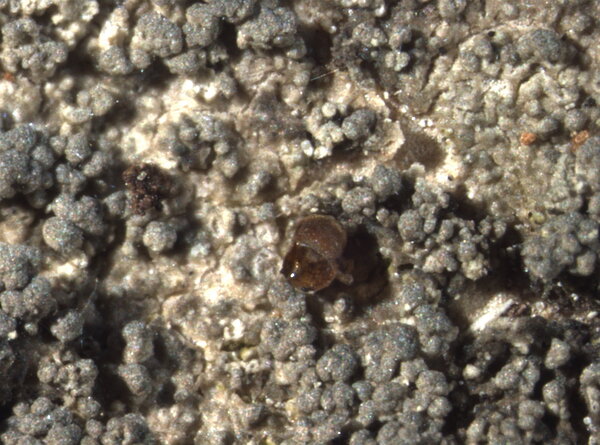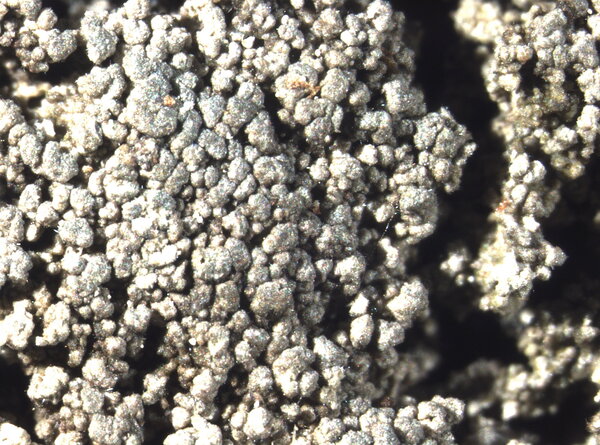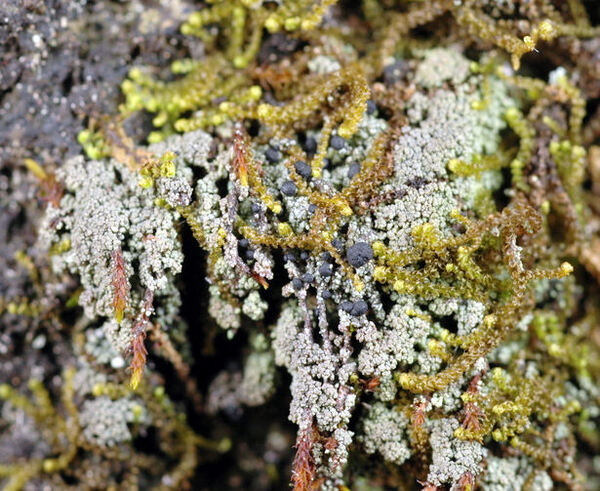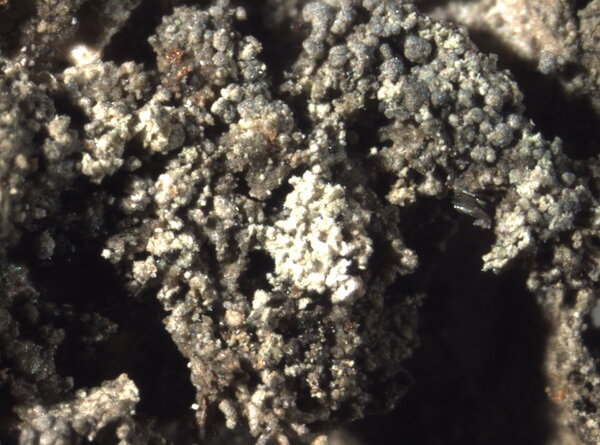Micarea leprosula (Th. Fr.) Coppins & A.Fletcher
Lichenologist, 7: 111, 1975. Basionym: Bilimbia milliaria var. leprosula Th. Fr. - Lich. Scand., 2: 382, 1874
Synonyms: Bacidia leprosula (Th. Fr.) Lettau; Bilimbia leprosula (Th. Fr.) H. Olivier
Distribution:
Description: Thallus crustose, episubstratic, ash-grey, blue-grey or more rarely grey-brown, with minute white flecks, of scattered to usually coalescing (in the central, thicker parts of thallus), convex to globose, 0.1-0.4 mm wide, fragile, eroding areoles forming cracked, sorediate patches, the soredia 20-50 μm thick, the outer hyphae greenish, K-, N+ red. Apothecia not always present, micareoid, flat to convex, dark blue grey to glossy black, 0.2-0.5 mm across, adnate but finally slightly constricted at base, sometimes confluent and tuberculate (and then up to 1 mm across), with a soon excluded proper margin. Proper exciple thin but well-developed, especially in young apothecia, pale fuscous brown, of radiating, branched and anastomosing hyphae; epithecium scarcely differentiated from the hymenium, dark green, K-, N+ red; hymenium colourless in lower part, greenish to blue-green in upper part, 40-60 μm high, C+ red; paraphyses branched and anastomosing, (0.7-)1-1.5 μm thick at mid-level, the apical cells up to c. 2.5 μm wide, the epithecial pigment confined to the surrounding gel; hypothecium more or less colourless, 35-45 μm high, but much higher in tuberculate apothecia. Asci 8-spored, clavate to cylindrical-clavate, in K/I with a blue outer layer and apical dome and unstained wall, the dome with an apical cushion. Ascospores (1-)3-septate, hyaline, cylindrical-ellipsoid to fusiform, more or less curved, 14-26(-29) x 4-5.5 μm. Photobiont micareoid, the cells 4-7 μm wide. Spot tests: Thallus K-, C+ red, KC+ red, P+ red. Chemistry: argopsin and gyrophoric acid.Note: on moribund silicicolous bryophytes and on twigs of shrubs, with optimum near and above treeline; the species is known from several localities in the Alps, all outside the Italian territory, but is easy to overlook, being often sterile, and should be looked for in the Italian Alps.
Growth form: Crustose
Substrata: bark, soil, terricolous mosses, and plant debris
Photobiont: green algae other than Trentepohlia
Reproductive strategy: mainly asexual, by soredia, or soredia-like structures (e.g. blastidia)
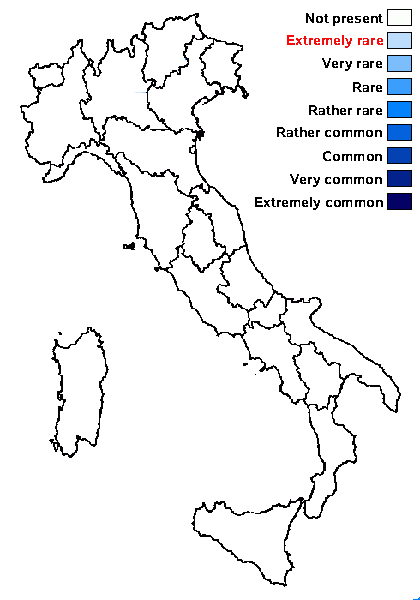
Predictive model
Growth form: Crustose
Substrata: bark, soil, terricolous mosses, and plant debris
Photobiont: green algae other than Trentepohlia
Reproductive strategy: mainly asexual, by soredia, or soredia-like structures (e.g. blastidia)

Predictive model
 Index Fungorum
Index Fungorum
 GBIF
GBIF
